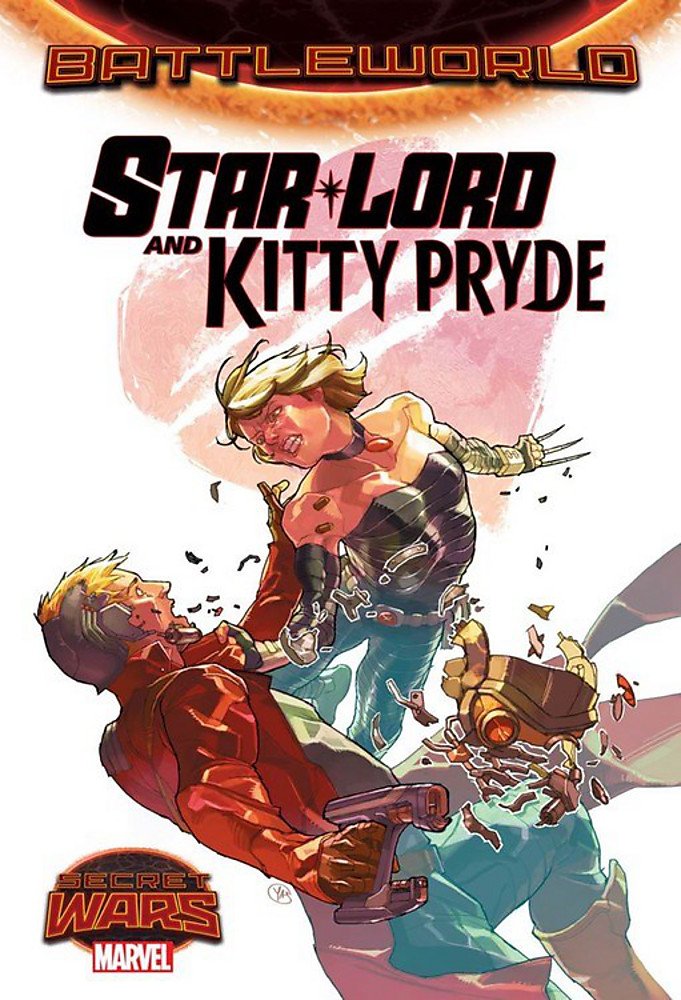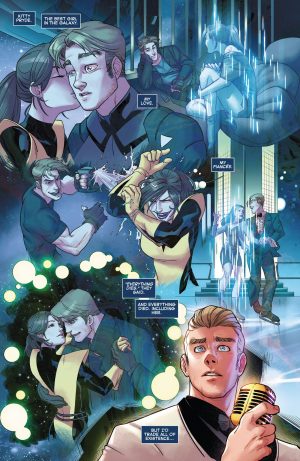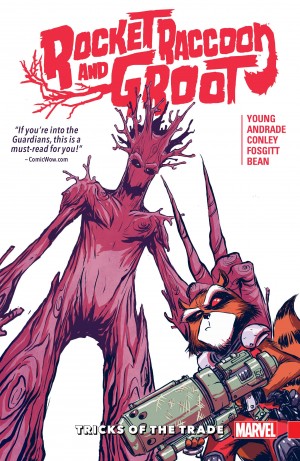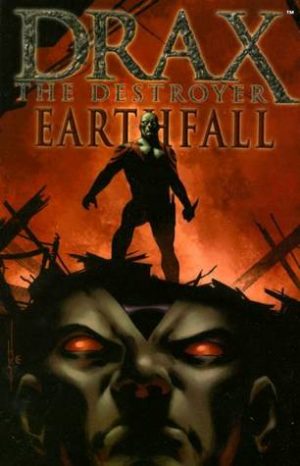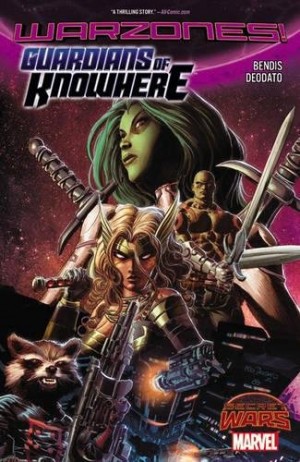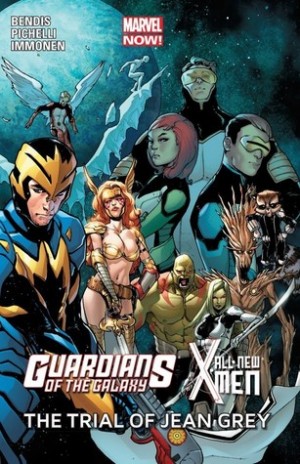Review by Ian Keogh
In terms of events connected with Secret Wars, Star-Lord is one of very few anomalies, a person able to remember that the universe has been altered, that there was a time before assorted small kingdoms were forced together with Doctor Doom as absolute ruler. Aware his knowledge is dangerous, and aware he’s being hunted, he passes time as a night club singer, wowing audiences with Disney songs unknown to them. He’s also pining for Kitty Pryde. When he meets her, the complication is that because she was reborn along with almost everyone else, Kitty Pryde has no idea who Peter Quill is, either as a hero or a civilian. Furthermore, she’s not the Kitty he knew in other ways, a primary inconvenience being an unquestioning loyalty to Doom, and as well as her phasing powers she has a version of Wolverine’s claws, and no compunctions about using them.
Sam Humphries successfully evokes the atmosphere of a classic 1940s romantic drama caper with super powers thrown in. His use of guest stars is good, with the largest supporting role given to Gambit, and a fantastic reworking of Drax the Destroyer. Throughout his run on Star-Lord Humphries has prioritised fun, and freed from any wider concerns this is his purest example. That’s helped by Alti Firmansyah being a great artistic find, with an attractive form of cartooning, and a natural instinct for telling a story well. She also provides imaginative little visual throwaways. His modification of Washington Square to incorporate a Doom statue is great.
On its own Humphries and Firmansyah’s story is well worth reading, but would have produced a very slim graphic novel. Unfortunately when it came to back-up material Marvel were limited for choice, and what they ended up with was far from ideal. The connection with the opening chapter of another changed universe story in 1995’s Generation Next, is that it also features a Kitty Pryde with claws. There’s some nice Chris Bachalo art, but little else to recommend it as Scott Lobdell’s story is little more than one long fight scene. The reason for including the concluding chapter to the then very recent Black Vortex crossover between the X-Men and the Guardians of the Galaxy is that both characters appear, with a powered-up Kitty Pryde. Humphries writes this as well, a story of hope and optimism, and certainly key to both characters, but the finale alone rather drifts. It’s also a cerebral and personality strong story, not really suited to all-action style of Ed McGuinness, and Javier Garrón is efficient without being memorable.
The main feature is worth the price of admission on its own, just don’t get too hung up at the pointless back-ups.
